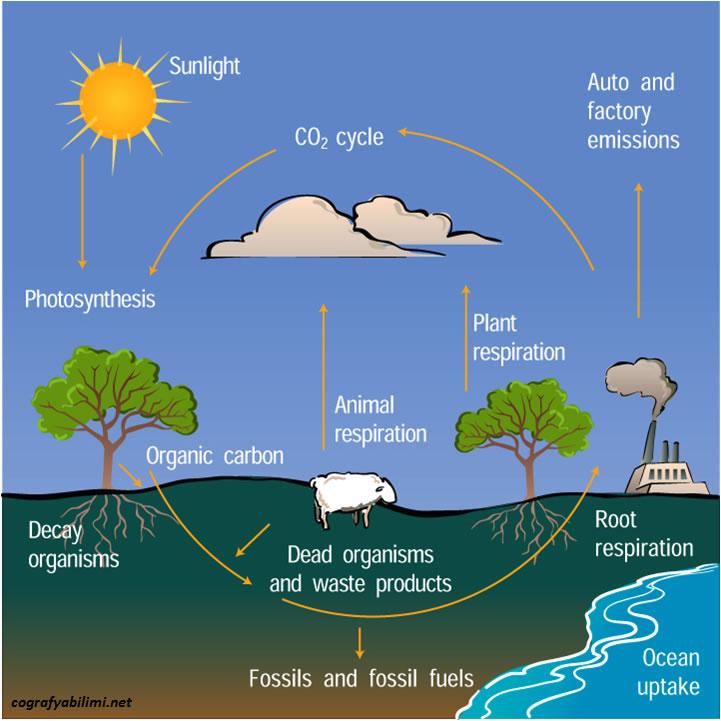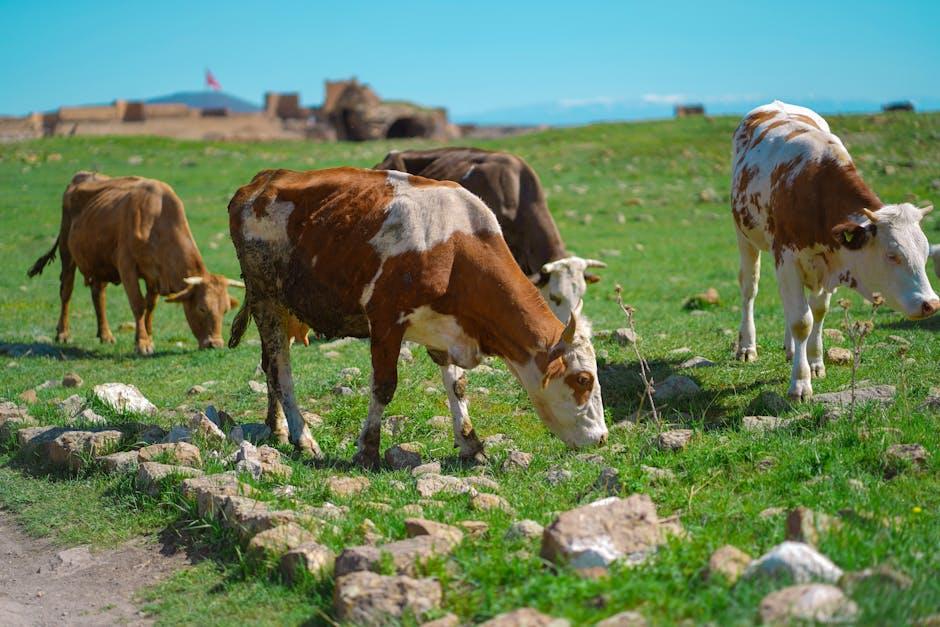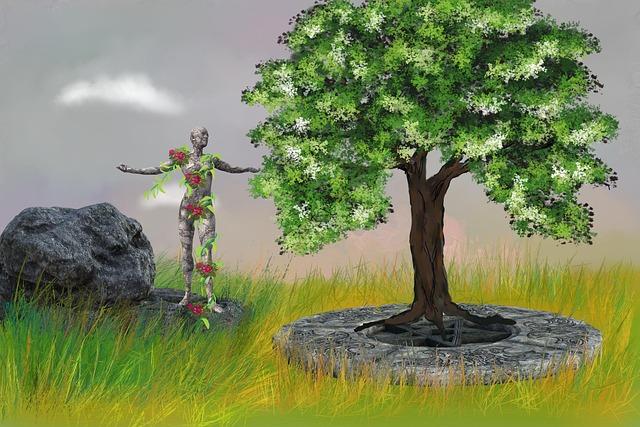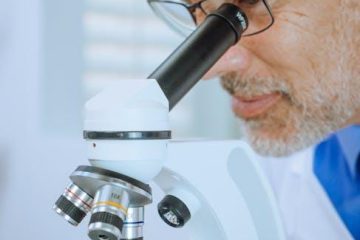Table of Contents
- Understanding the Origins of the Gaia Hypothesis and Its Proponents
- Exploring the Interconnectedness of Life and the Earth System
- The Impact of the Gaia Hypothesis on Environmental Science and Sustainability
- Key Critiques and Support for the Gaia Hypothesis in Scientific Discourse
- Practical Implications of the Gaia Hypothesis for Future Environmental Policies
- Q&A
- Key Takeaways

Understanding the Origins of the Gaia Hypothesis and Its Proponents
The Gaia Hypothesis, first articulated by James Lovelock in the 1970s, proposes that Earth functions as a self-regulating, complex system. Lovelock suggested that living organisms interact with their inorganic surroundings to sustain conditions for life, essentially viewing the planet as a single organism. His theory was not without controversy, yet it opened new avenues for understanding the interdependence of life and the environment. Lovelock, often collaborating with microbiologist Lynn Margulis, emphasized how life influences the climate and geology of Earth, creating a balanced environment that favors life continuation.
Numerous proponents have championed the Gaia Hypothesis, promoting its insights into ecological balance and environmental health. Some of the most notable figures include:
- Lynn Margulis: A key collaborator with Lovelock, she contributed essential insights from microbiology, stressing that microorganisms play a crucial role in the Earth’s life-support systems.
- David Suzuki: The famed environmental activist and scientist has advocated for the holistic principles of the Gaia Hypothesis, framing it within a larger context of sustainability and environmental ethics.
- Vandana Shiva: An environmental activist who highlights the interconnectedness of ecosystems and the importance of biodiversity, echoing Gaia’s principles in her advocacy against industrial agriculture.
This paradigm shift has influenced various fields, from ecology to philosophy, encouraging a holistic view of life on Earth. It has also sparked discussions about our responsibility in maintaining the planet’s delicate balance; recognizing humans as part of a broader ecological community is now more pertinent than ever. Through ongoing research and dialogue, the Gaia Hypothesis continues to inspire both scientific inquiry and environmental advocacy.
Exploring the Interconnectedness of Life and the Earth System
The profound concept of the interdependence between organisms and their environment is encapsulated in the premise of the Gaia hypothesis, which suggests that life on Earth influences the planet’s environment in a synergistic manner. This self-regulating system showcases how living organisms interact with various elements, creating a delicate balance crucial for maintaining conditions favorable for life. Through processes such as photosynthesis and nitrogen fixation, organisms not only transform the resources they utilize but also contribute to the regulation of the atmosphere, soil quality, and water cycles.
Understanding this interconnectedness involves recognizing several key relationships:
- Biogeochemical Cycles: The movement of elements and compounds through biological, geological, and chemical processes highlights the essential roles that organisms play in sustaining life.
- Ecosystem Services: These include processes like pollination, decomposition, and nutrient cycling, all of which rely on the health and diversity of living organisms.
- Climate Regulation: Forests and oceans, as vital carbon sinks, help mitigate climate change while supporting diverse ecosystems simultaneously.
To illustrate the complexity of these relationships, consider the following table, which summarizes the roles of different ecosystems in supporting life on Earth:
| Ecosystem Type | Key Functions | Impact on Life |
|---|---|---|
| Forests | Carbon storage, Oxygen production, Biodiversity | Supports wildlife, Regulates climate |
| Wetlands | Water filtration, Flood control, Habitat | Protects species, Maintains hydrology |
| Oceans | Carbon absorption, Temperature regulation, Nutrient cycling | Supports marine life, Influences weather patterns |
In essence, the Gaia hypothesis emphasizes that Earth functions as a cohesive unit, where the survival of life is inextricably linked to the health of our planet. Every species, no matter how small, plays a role in this grand tapestry, challenging us to rethink our position within it. Recognizing this interrelationship prompts a deeper respect for natural processes and highlights the urgency in preserving the delicate balance that sustains us all.

The Impact of the Gaia Hypothesis on Environmental Science and Sustainability
The Gaia Hypothesis, conceptualized by James Lovelock, posits that Earth functions as a self-regulating system, where living organisms interact with their inorganic surroundings to maintain conditions suitable for life. This perspective has transformed environmental science by encouraging researchers to view ecological systems holistically. Instead of analyzing individual elements in isolation, scientists are now more focused on the intricate relationships between species and their habitats, which has led to a broader understanding of ecosystems’ functionality. This shift has sparked numerous interdisciplinary studies that draw from ecology, biology, chemistry, and even philosophy.
In terms of sustainability, the Gaia Hypothesis has profound implications for how we approach environmental management. By recognizing that human activities can disrupt the delicate balance of natural systems, it emphasizes the need for practices that enhance ecological resilience. Here are a few concepts influenced by this perspective:
- Restorative Practices: Initiatives that not only minimize harm but also aim to restore ecosystems to their natural state.
- Ecological Footprint Reduction: Encouraging smaller, regenerative lifestyles that contribute positively to the environment.
- Interconnectivity: Highlighting the importance of preserving biodiversity, as each species plays a vital role in the ecosystem’s health.
The impact of the Gaia Hypothesis extends to policy formulation as well. By integrating its principles into environmental legislation, policymakers can support actions that align economic activities with ecological integrity. This transformative view has led to the introduction of legislation aimed at reducing carbon emissions, promoting renewable energy, and incentivizing sustainable agriculture practices. An example of this evolutionary approach in policy-making can be illustrated in the table below:
| Policy Initiative | Gaia Principle | Expected Outcome |
|---|---|---|
| Carbon Tax | Promotes a sustainable balance between emissions and natural processes | Reduction in carbon footprint |
| Protected Areas Designation | Encourages biodiversity preservation as a regulator of ecosystems | Enhancement of ecosystem services |
| Sustainable Agriculture Incentives | Supports practices that align human agriculture with natural cycles | Improved soil health and resilience |

Key Critiques and Support for the Gaia Hypothesis in Scientific Discourse
The Gaia Hypothesis, proposing that Earth functions as a self-regulating system, ignites passionate debates among scientists. Critics highlight complexities in ecological dynamics, suggesting that attributing agency or intentionality to the Earth oversimplifies intricate biological and geological interactions. They argue that the hypothesis, while poetic, lacks quantitative evidence to substantiate the idea of homeostasis on a planetary scale. Some skeptics insist that the emergent properties of life do not necessarily imply equilibrium but rather chaotic resilience in the face of environmental fluctuations.
On the other hand, supporters of the Gaia Hypothesis argue that the interconnectedness of life forms and their environments demonstrates a kind of synergy that warrants deeper exploration. They emphasize that phenomena such as climate regulation, nutrient cycling, and biodiversity preservation suggest a purposeful balance among ecosystems. This perspective is bolstered by observations from fields like ecology and Earth system science that affirm the intricacies of biogeochemical interactions and feedback loops, lending credence to the idea of a collective “organism” in the Earth system.
The ongoing dialogue around the Gaia Hypothesis encapsulates a broader inquiry into how scientific paradigms evolve. This framework prompts reconsideration of our relationship with nature and encourages interdisciplinary approaches, merging biology, environmental science, and philosophy. Below is a summary of key critiques and supporting arguments:
| Critiques | Support |
|---|---|
| Oversimplification: Critics argue that it reduces complex systems to a singular narrative. | Interconnectedness: Proponents highlight the intricate ties between life and the environment. |
| Lack of Quantitative Evidence: Scientific measurement of Gaia’s mechanisms remains elusive. | Interdisciplinary Insight: The hypothesis promotes collaboration across various scientific fields. |
| Metaphorical Nature: Many see it as more philosophical than scientific. | Empirical Observations: Evidence supports ecosystems functioning in ways that mimic self-regulation. |

Practical Implications of the Gaia Hypothesis for Future Environmental Policies
The Gaia Hypothesis presents a compelling framework for understanding the interconnectedness of Earth’s biological and physical systems, suggesting that life itself contributes to the stability of the environment. This perspective can profoundly shape future environmental policies by emphasizing the importance of ecosystem health and biodiversity. Policymakers should consider the following strategies:
- Integrative Approaches: Policies that promote resource conservation must be holistic, addressing multiple sectors, including agriculture, manufacturing, and urban development.
- Restoration Initiatives: Investment in ecological restoration programs can enhance biodiversity, which is vital for ecosystem resilience.
- Education and Awareness: Raising public awareness about the Gaia Hypothesis can foster a culture of sustainability and support for eco-friendly policies.
Furthermore, to operationalize ideas stemming from this hypothesis, data-driven decision-making is essential. Policymakers can utilize environmental data to assess the impacts of human activities on Earth’s systems. A potential approach could include creating a regulatory framework that incorporates the following principles:
| Principle | Description |
|---|---|
| Holistic Governance | Coordinate environmental management across different levels of government and sectors. |
| Adaptive Management | Implement policies that can evolve based on new environmental data and research. |
| Community Engagement | Involve local communities in decision-making processes to tailor policies to regional needs. |
the interplay of climate change, pollinator decline, and habitat destruction underlines the urgency of adopting policies inspired by the Gaia Hypothesis. By recognizing that human health and environmental health are inextricably linked, a shift towards sustainable practices will become imperative. This can be achieved through:
- Legislation for Sustainable Practices: Support legislation that incentivizes businesses to adopt eco-friendly technologies.
- Protecting Natural Habitats: Create protected areas to safeguard vital ecosystems that maintain ecological balances.
- Long-term Economic Planning: Integrate environmental considerations into economic forecasts and planning to promote sustainable growth.
Q&A
Q&A on the Gaia HypothesisQ: What is the Gaia Hypothesis? A: The Gaia Hypothesis posits that Earth and its biological systems behave as a single, self-regulating entity. It suggests that living organisms interact with their inorganic surroundings to create a stable environment conducive to life. Essentially, Earth functions like a superorganism where the biosphere, atmosphere, hydrosphere, and lithosphere work in harmony.Q: Who proposed the Gaia Hypothesis? A: The Gaia Hypothesis was popularized by British scientist James Lovelock in the 1970s. Although the groundwork for these ideas had been laid by earlier scientific thinkers, Lovelock’s unique approach integrated aspects of biology, ecology, and Earth sciences to articulate the concept in a compelling way.
Q: What was the motivation behind proposing the Gaia Hypothesis? A: Lovelock’s primary motivation was to understand how life on Earth interacts with the environment to maintain conditions suitable for life. He sought to explain the remarkable stability of Earth’s climate and chemical composition despite external changes, such as volcanic eruptions or asteroid impacts.
Q: What scientific evidence supports the Gaia Hypothesis? A: Evidence for the Gaia Hypothesis can be observed in various ecological interactions. For instance, the regulation of atmospheric gases like oxygen and carbon dioxide by living organisms and their impact on global temperatures demonstrate this interconnectedness. Some studies suggest that microbial life significantly influences Earth’s geochemistry, acting as agents of this self-regulation.
Q: Has the Gaia Hypothesis received any criticism? A: Yes, the Gaia Hypothesis has faced criticism, particularly concerning its scientific validity. Some scientists argue that it lacks empirical evidence and can be seen as overly teleological, implying that life on Earth exists with a purpose. Critics often advocate for a more mechanistic understanding of ecological processes rather than one that suggests a purposeful design.
Q: How has the Gaia Hypothesis influenced environmentalism? A: The Gaia Hypothesis has had a profound impact on environmental thought, promoting the idea that humans are integral to the Earth’s ecological processes. It supports the notion of sustainability, urging people to consider their role in the global ecosystem and encouraging conservation efforts as part of protecting the planet’s health.
Q: What are some practical applications of the Gaia Hypothesis? A: The Gaia Hypothesis has inspired various practical applications in ecotechnology and sustainability. For instance, it underpins approaches to agriculture that respect natural ecosystems, promotes biodiversity conservation, and informs policies aimed at climate change mitigation, emphasizing the interconnectedness of life and the environment.
Q: What legacy has the Gaia Hypothesis left in science and culture? A: The Gaia Hypothesis has fostered interdisciplinary dialogue between the sciences and humanities. It has sparked discussions on bioethics, climate change, and the philosophy of nature, prompting individuals to reassess their relationship with the planet and encouraging holistic approaches to environmental challenges. Lovelock’s ideas continue to resonate, making the Earth a central character in our collective narrative of survival.



0 Comments